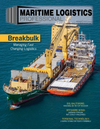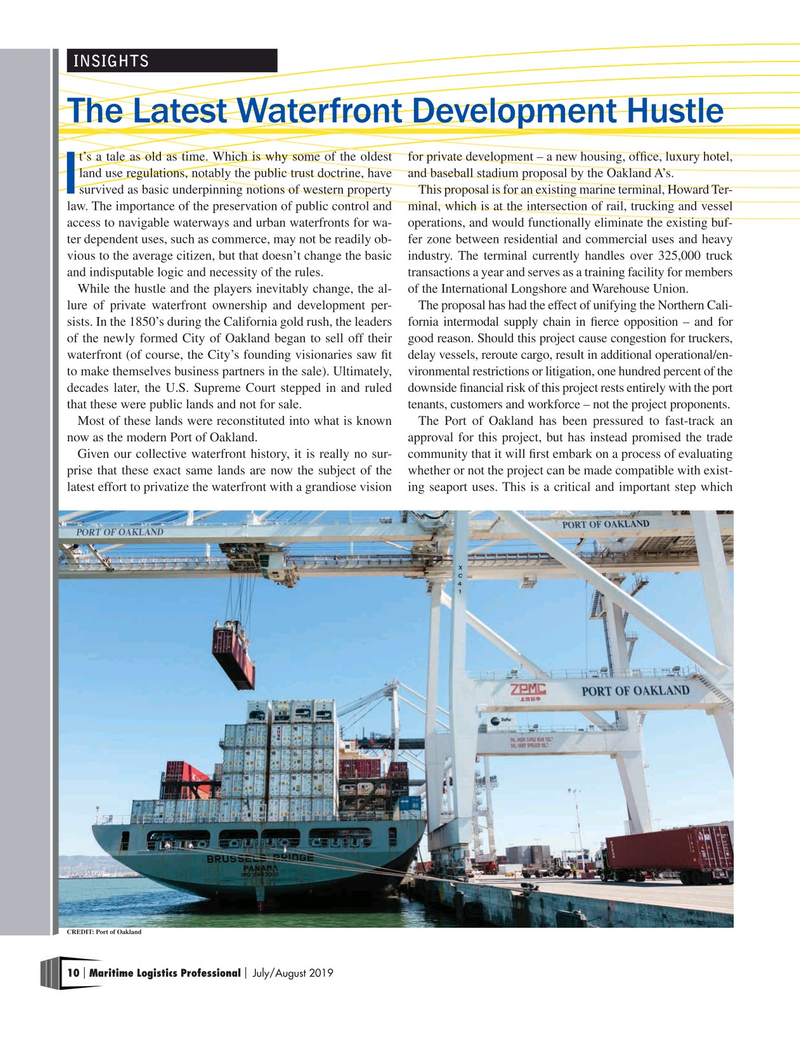
Page 10: of Maritime Logistics Professional Magazine (Jul/Aug 2019)
Breakbulk Issue
Read this page in Pdf, Flash or Html5 edition of Jul/Aug 2019 Maritime Logistics Professional Magazine
INSIGHTS
The Latest Waterfront Development Hustle t’s a tale as old as time. Which is why some of the oldest for private development – a new housing, of? ce, luxury hotel, land use regulations, notably the public trust doctrine, have and baseball stadium proposal by the Oakland A’s.
Isurvived as basic underpinning notions of western property This proposal is for an existing marine terminal, Howard Ter- law. The importance of the preservation of public control and minal, which is at the intersection of rail, trucking and vessel access to navigable waterways and urban waterfronts for wa- operations, and would functionally eliminate the existing buf- ter dependent uses, such as commerce, may not be readily ob- fer zone between residential and commercial uses and heavy vious to the average citizen, but that doesn’t change the basic industry. The terminal currently handles over 325,000 truck and indisputable logic and necessity of the rules. transactions a year and serves as a training facility for members
While the hustle and the players inevitably change, the al- of the International Longshore and Warehouse Union.
lure of private waterfront ownership and development per- The proposal has had the effect of unifying the Northern Cali- sists. In the 1850’s during the California gold rush, the leaders fornia intermodal supply chain in ? erce opposition – and for of the newly formed City of Oakland began to sell off their good reason. Should this project cause congestion for truckers, waterfront (of course, the City’s founding visionaries saw ? t delay vessels, reroute cargo, result in additional operational/en- to make themselves business partners in the sale). Ultimately, vironmental restrictions or litigation, one hundred percent of the decades later, the U.S. Supreme Court stepped in and ruled downside ? nancial risk of this project rests entirely with the port that these were public lands and not for sale. tenants, customers and workforce – not the project proponents.
Most of these lands were reconstituted into what is known The Port of Oakland has been pressured to fast-track an now as the modern Port of Oakland. approval for this project, but has instead promised the trade
Given our collective waterfront history, it is really no sur- community that it will ? rst embark on a process of evaluating prise that these exact same lands are now the subject of the whether or not the project can be made compatible with exist- latest effort to privatize the waterfront with a grandiose vision ing seaport uses. This is a critical and important step which
CREDIT: Port of Oakland 10 Maritime Logistics Professional July/August 2019 | |

 9
9

 11
11
